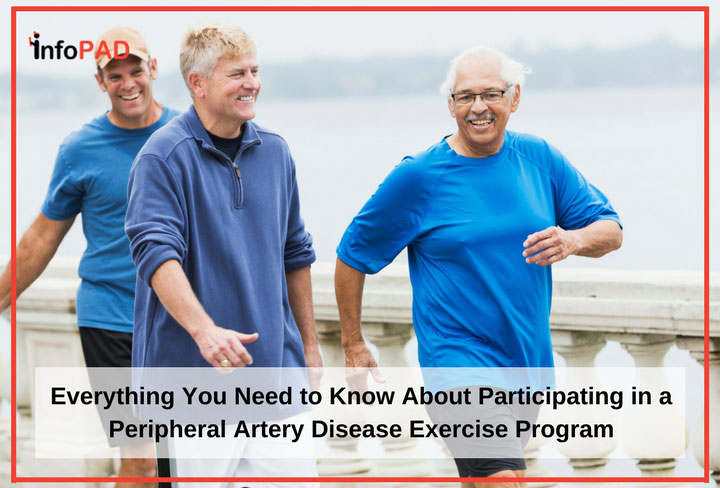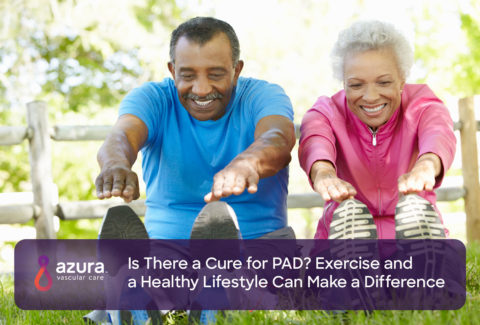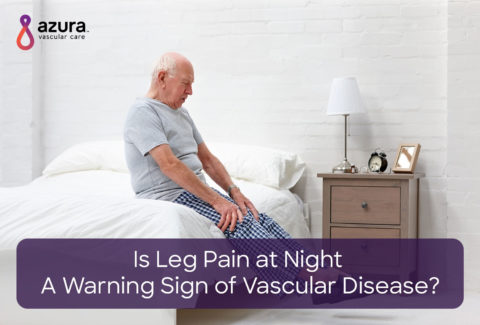
As the U.S. population ages, the number of people with peripheral artery disease (PAD) is expected to continue to increase.i Today, an estimated 8 to 12 million adults in the United States are living with PAD.i, ii In fact, it’s now estimated that 5% of adults in the United States over the age of 50 have PAD, and as many as 20% of people 65 or older are affected by it.
PAD typically occurs in your legs and is caused by a buildup of plaque in your arteries. Plaque is a combination of fat and other substances like cholesterol. This buildup leads to narrowing, and in some cases blockage, of the arteries, which results in poor circulation and decreased blood flow to your legs.
PAD can cause tired, achy legs and cramping when you walk. Even simple activities like grocery shopping or getting to your car can cause cramping in your thighs and calves that’s severe enough to make you stop and rest.
But there may be some good news for you.ii Let’s discuss what you should expect when you’re planning to participate in a peripheral artery disease exercise program.
Talk to Your Doctor
 Of course, before starting any exercise program, you’ll want to talk to your doctor. If you’ve been diagnosed with PAD, your doctor may recommend you begin a program of supervised exercise therapy.iii Most likely, you’ll be told to start slowly. Some of the exercises you might be asked to engage in are:
Of course, before starting any exercise program, you’ll want to talk to your doctor. If you’ve been diagnosed with PAD, your doctor may recommend you begin a program of supervised exercise therapy.iii Most likely, you’ll be told to start slowly. Some of the exercises you might be asked to engage in are:
- Walking outdoors
- Doing leg exercises
- Walking on a treadmilliii
A good peripheral artery disease exercise program will alternate between activity and rest, and can be undertaken in either a medical rehabilitation center, or, if your doctor approves, at home.
Assuming you’re well enough to exercise – that is you don’t have other serious illnesses that could be made worse with exercise – your healthcare team will help you design an exercise program tailored just for you.
Your initial program will probably be based on a graded treadmill test, which can measure a couple of things:
- How fast you can walk without pain
- At what incline you can walk without pain
This test will determine where your initial training sessions should begin. During these first sessions, you might be asked to walk on a treadmill until you feel moderate pain in your legs. You will then stop and rest. When the pain has completely disappeared, you’ll be asked to walk again.
The goal of these sessions is to have you walk on a treadmill for a determined total combined time. It’s not uncommon for the first benchmark time to be around 15 minutes. Keep in mind, this walking time does not include minutes spent resting or any warm up or cool down time.
As you become more tolerant to walking, your goal will be increased. You may even get up to a total treadmill time of 60 minutes, including rest periods and a five-minute warm up and a five-minute cool down period.iv
Once you can complete an entire 60-minute training session, you may be able to increase the speed and/or the incline of the treadmill.
If you’re starting your program at a medical rehabilitation center, after you’ve progressed to a level deemed adequate for your condition, you might be able to continue your training sessions at home or at your local gym.
Which Is Better: Rehab Center or an At-Home Program?
If you don’t have a treadmill at home or access to a gym, walking in your neighborhood can be a great alternative. During the nice-weather months, you can enjoy being outdoors while you’re getting your exercise in. And, a recent study shows that whether your exercise program involves a treadmill or walking outside in your neighborhood, the benefits are the same.ii
If your insurance won’t pay for supervised treadmill walking at a rehab center, or if the center is located too far from your home, you might decide to start an approved peripheral artery disease exercise program at home from the very beginning. For some patients, a home-based program using a step counter – like a Fitbit® or pedometer – can be just as successful as a supervised program may be, but you need to follow the program exactly as prescribed.
In one study, 119 people with PAD were split randomly into three groups:
- A home-based exercise program, using step counters
- A supervised in-house exercise program
- A non-exercise groupii
Both of the exercise groups engaged in 12-week programs. During the 12 weeks, the groups gradually increased the time they spent walking from 20 minutes three times a week to 45 minutes three times a week.
Based on their leg pain, all of the exercisers set their own speed when walking. While the supervised group of exercisers used a treadmill, the home-based walkers were told to walk on level ground in their neighborhood.
Some results from the study:
- Four out of five people in both groups stuck with the program
- Home-based exercisers walked more slowly than the supervised exercisers
- Home-based exercisers walked an average of 11 minutes longer than what they were told to walk
- Over the course of the 12 weeks, both of the exercise groups increased the amount of time they could walk before leg pain set in
- Both of the exercise groups reported reduced symptoms
If you suffer from PAD, regular exercise may help your symptoms as well as improve your ability to walk for longer periods of time without pain. And always, be sure you consult with your doctor before taking on a new exercise program.
Sources:
i Hamburg, N. M., and Balady, G. J. (2011) Exercise Rehabilitation in Peripheral Artery Disease: Functional Impact and Mechanisms of Benefits. Circulation, 123(1): 97¬–97
ii Cardiosmart.org (2011). Exercise for PAD: Trying it at Home. American College of Cardiology. https://www.cardiosmart.org/News-and-Events/2011/02/Exercise-for-PAD-Trying-it-at-Home#9A24DFF183B243ED9278B72B5FC41BFE
iii American Heart Association (2017).
iv Vasulardisease.org (2017) PAD Training Exercise Toolkit: A guide for Healthcare Professionals. http://vasculardisease.org/files/pad-exercise-training-toolkit.pdf



